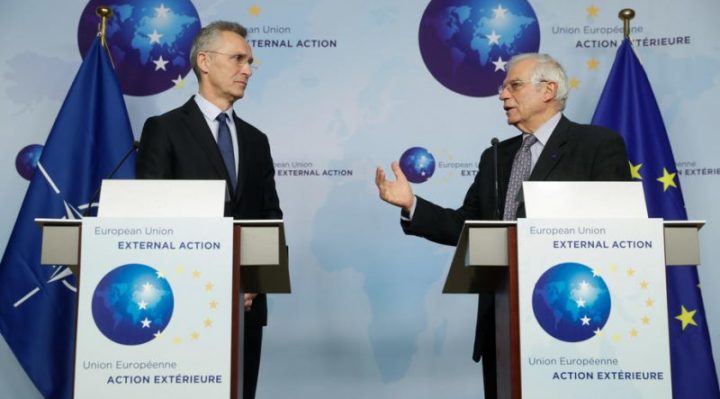A dedicated EU military task force will be set up to support the coordination of the national armed forces in the fight against the coronavirus pandemic. However, it is yet unclear whether and how efforts could be coordinated on EU-NATO level to avoid duplication.
EU’s chief diplomat Josep Borrell, after a meeting with EU defence ministers on Monday (13 April), tasked the European External Action Service (EEAS) “to explore how we could use the military expertise at EU level to support exchange of information and sharing of best practices among member states”.

For that a dedicated task force is to be set up within the EEAS structures, led by the European Union Military Staff (EUMS), to “temporarily support and facilitate information exchange on national military assistance in support of civilian authorities to help fight the coronavirus pandemic,” Borrell said.
The new task force is meant to cooperate with the EU’s Emergency Response Coordination Centre (ERCC), a core part of the EU’s Civil Protection Mechanism, that coordinates the delivery of assistance to disaster stricken countries, such as relief items, expertise, civil protection teams and specialised equipment.
However, it is still unclear when the task force is meant to take up its work.
“This will be done in full coordination and complementarity with NATO – I can assure you that there will be no duplication of work,” said Borrell. “But it is important that we, Europeans, work together to ensure a coordination effort and a mutual support where is needed, in full solidarity.”
As NATO in recent weeks has significantly stepped up its efforts to support its member states in the fight against COVID-19, experts have questioned the EU’s slow practical response on the matter.
In early April, NATO foreign ministers tasked Supreme Allied Commander Europe (SACEUR), General Tod Wolters, with coordinating the air transport of medical equipment and personnel across Europe.
One of his tasks was to implement simplified procedures for rapid air mobility, in coordination with Eurocontrol, the pan-European, civil-military organisation dedicated to supporting European aviation, using the NATO call sign and clearance for military relief flights.
Known as Rapid Air Mobility (RAM), the initiative is part of NATO’s wider so-called military mobility effort to boost the deployability of allied troops and assets.
Before then members largely acted upon their own initiative, with the military alliance primarily working to coordinate the acquisition of protective medical equipment through the Euro-Atlantic Disaster Relief Coordination Centre (EADRCC).
Asked by EURACTIV, whether there are plans to join forces on EU-NATO level, the EU’s Chief diplomat answered: “For sure, this is what it is all about. What we have decided is to increase the exchange of information and the coordination between our capacities and the needs required here and there.”
“The Secretary General of NATO [Jens Stoltenberg] has been in touch with me to explain their plans and we will cooperate with them according to the requirements arising from this this coordination procedure,” Borrell added.
Asked the same question by EURACTIV, NATO Secretary-General Jens Stoltenberg confirmed that “NATO and the European Union are complementing each other.”
